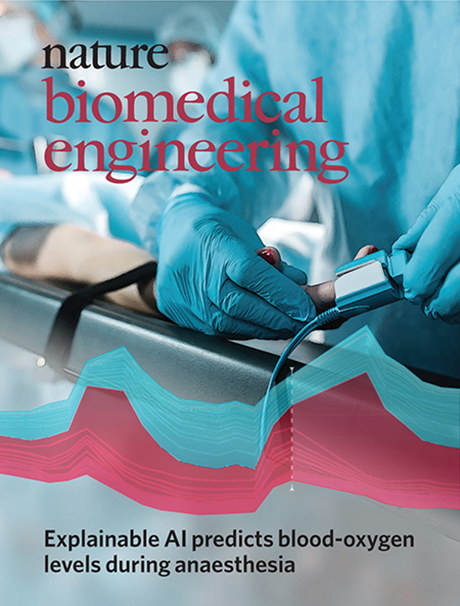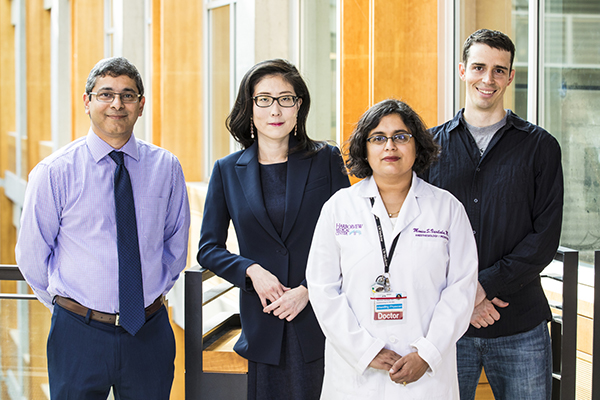The Allen School is thrilled to introduce nine outstanding educators and researchers who have joined or will soon join our faculty in the current academic year. The new arrivals strengthen our leadership in areas such as software engineering, networking, machine learning, and computer science education while enabling us to expand into exciting new territory spanning cryptography, computational design for manufacturing, and data science for human health and well-being.
Meet the latest additions to our scholarly community and discover how they will contribute to the University of Washington’s reputation for educational excellence and leading-edge innovation:
Tim Althoff, data science for health and well-being
T im Althoff will arrive at the Allen School in January 2019. Althoff’s research focuses on leveraging the detailed sensor and social data resulting from people’s interactions with smart devices and social networks to address pressing societal challenges. To that end, he develops novel computational methods for modeling human behavior in order to generate actionable insights into people’s health and well-being. Althoff’s work, which combines elements of data science, social network analysis, and natural language processing, is highly interdisciplinary and has applications that extend beyond computing to fields such as medicine and psychology.
im Althoff will arrive at the Allen School in January 2019. Althoff’s research focuses on leveraging the detailed sensor and social data resulting from people’s interactions with smart devices and social networks to address pressing societal challenges. To that end, he develops novel computational methods for modeling human behavior in order to generate actionable insights into people’s health and well-being. Althoff’s work, which combines elements of data science, social network analysis, and natural language processing, is highly interdisciplinary and has applications that extend beyond computing to fields such as medicine and psychology.
For one project, Althoff worked with colleagues in engineering and medicine to perform a global analysis of physical activity using smartphone date for more than 700,000 people in 111 countries. The goal of the study was to better understand physical activity patterns and identify factors related to gender, health, income level, and the built environment that contribute to “activity inequality” — and lead to more than 5 million deaths each year. The team’s analysis, which was published in the journal Nature, was the largest-ever study of human physical activity of its kind, representing 68 million days of data covering billions of individual steps. In another study, Althoff and collaborators at Microsoft Research examined the impact of the popular mobile game Pokémon Go on physical activity levels by drawing upon data from 32,000 users of the Microsoft Band fitness tracker. The researchers concluded that mobile gaming apps like Pokémon Go have the potential to more effectively increase activity levels among low-activity populations than health-focused apps or other existing interventions.
In addition to his focus on physical wellness, Althoff has explored how computing can help combat mental illness, a major global health issue that affects more than 43 million adults in the United States alone. While psychotherapy and counseling are important tools in the treatment of mental health issues, researchers have lacked sufficient data on which conversation strategies are most effective. To address this shortcoming, Althoff and his colleagues employed natural language processing techniques to produce the most extensive quantitative analysis of the linguistic aspects of text-based counseling conversations to date. By using sequence-based conversation models, message clustering, word frequency analyses, and other methods, the team was able to identify the conversation strategies most associated with successful patient outcomes. The resulting paper earned Althoff and his co-authors Best Paper at the annual conference of the International Medical Informatics Association (IMIA 2017).
Althoff earned his Ph.D. in computer science from Stanford University, where he was a member of the Stanford InfoLab, Stanford Mobilize Center, and the group behind the Stanford Network Analysis Project (SNAP). He previously received his bachelor’s and master’s degrees in computer science from the University of Kaiserslautern, Germany. His work has been covered by The New York Times, The Wall Street Journal, The Economist, the BBC, CNN, and many others.
René Just, software engineering and security
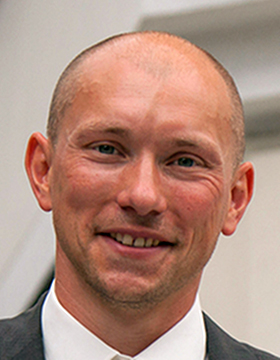 Former Allen School postdoc René Just returned to UW this fall from the University of Massachusetts Amherst, where he was a faculty member in the College of Information and Computer Sciences. Just’s research focuses on advancing software correctness, robustness, and security; it spans static and dynamic program analysis, mobile security, empirical software engineering, and applied machine learning. He is particularly interested in the development of novel techniques for automated testing and debugging that scale to real-world software systems. He also develops research and educational infrastructures with a focus on reproducibility and comparability of empirical research.
Former Allen School postdoc René Just returned to UW this fall from the University of Massachusetts Amherst, where he was a faculty member in the College of Information and Computer Sciences. Just’s research focuses on advancing software correctness, robustness, and security; it spans static and dynamic program analysis, mobile security, empirical software engineering, and applied machine learning. He is particularly interested in the development of novel techniques for automated testing and debugging that scale to real-world software systems. He also develops research and educational infrastructures with a focus on reproducibility and comparability of empirical research.
After earning his bachelor’s degree in computer science from the Cooperative State University Heidenheim, Just spent nearly two years in industry as a software design engineer for German company Fritz & Macziol. He returned to academia to earn his master’s and Ph.D. from the University of Ulm in Germany before taking up a position as a postdoctoral research associate at UW, where he worked with Allen School professor Michael Ernst in the Programming Languages & Software Engineering (PLSE) group.
Just’s research to advance the state of the art in software testing and debugging already has had an extensive impact within the software engineering community and earned him three Distinguished Paper Awards from the Association for Computing Machinery. For one award-winning project, Just and his collaborators studied the relationship between artificial faults, called mutants, and real faults, and the suitability of mutants for software testing research. This foundational work, which has received more than 260 citations in four years, provides strong empirical support for the use of mutants but also identifies inherent limitations. Just’s Major mutation framework played an important role in this project as it enables efficient mutation analysis of large software systems and fundamental research involving hundreds of thousands of mutants. For another award-winning project, Just and his collaborators analyzed the effectiveness and limitations of three popular automated test generation tools on more than 350 real-world faults. Their evaluation revealed that even using the most advanced techniques, fewer than 20 percent of the generated test suites detected a fault, and 15 percent of all generated tests were flaky—they failed randomly or generated false-positive warnings.
Just’s interest in the reproducibility of software engineering research led him to develop Defects4J, a first-of-its-kind repository of reproducible, isolated, and annotated faults coupled with a framework for experimentation and extension. Like the Major mutation framework, Defects4J is widely used in software engineering research and in undergraduate and graduate software engineering courses around the world. Since its inception in 2014, Defects4J has been referenced more than 300 times and has been used in the evaluation of multiple award-winning papers at top-tier research conferences.
Huijia “Rachel” Lin, cryptography
 Rachel Lin is one of two new hires set to bring exciting new expertise to the Allen School in the field of cryptography starting in January 2019, after more than four years as a faculty member at the University of California, Santa Barbara. Lin’s research in cryptography, as well as at its intersection with security and theoretical computer science, aims to weaken or even supplant our reliance on trust-based approaches to securing confidential data — for example, trust between the corporate client and cloud service provider, or between citizens and government agencies — to cryptographically-enforced approaches that provide stronger privacy and integrity guarantees.
Rachel Lin is one of two new hires set to bring exciting new expertise to the Allen School in the field of cryptography starting in January 2019, after more than four years as a faculty member at the University of California, Santa Barbara. Lin’s research in cryptography, as well as at its intersection with security and theoretical computer science, aims to weaken or even supplant our reliance on trust-based approaches to securing confidential data — for example, trust between the corporate client and cloud service provider, or between citizens and government agencies — to cryptographically-enforced approaches that provide stronger privacy and integrity guarantees.
While current systems are fallible in that trust can be eroded or lost, that is not the only challenge; the risk of a single point of failure producing a large-scale privacy breach is ever-present. Lin is interested in reducing or removing this risk using techniques such as program obfuscation, wherein programs are rendered unintelligible while their functionality is maintained, and secure multiparty computation that enables a set of mutually distrustful entities to compute a function on their corresponding private data without revealing the data in the clear. Among the hurdles to advancing such alternatives to trust-based security is proving their feasibility based on well-studied, reliable, computational hardness assumptions, such as the hardness of factoring integers — proof of which Lin has already made significant progress. This is particularly true of her work in indistinguishability obfuscation (IO), a promising avenue of cryptography research for which she earned a CAREER Award from the National Science Foundation (NSF) last year. In a series of projects, she has succeeded in simplifying the algebraic structures needed to construct IO. In one example, Lin established a connection between IO, one of the most advanced cryptographic objects, with the pseudorandom generator (PRG), one of the most basic and familiar cryptographic primitives to prove that constant-degree, rather than high-degree, multilinear maps are sufficient for obfuscating programs. She subsequently refined this work to reduce the degree of multilinear maps required to construct IO from more than 30 to a grand total of three — a crucial step toward her goal of achieving IO from bilinear maps or other standard, well-studied objects, such as lattices.
Lin and her collaborators have demonstrated IO’s potential to be a powerful tool with multiple applications, including an alternative approach to designing fully homomorphic encryption without relying on lattices or the untested circular security assumptions, and ensuring the adaptive integrity and adaptive privacy of delegating Random Access Memory (RAM) computation to a cloud. She has also focused on advancing the state of the art in zero-knowledge proofs, non-malleability, and multi-party computation. On the latter, Lin earned a Best Paper Award at EUROCRYPT 2018 for achieving new levels of efficiency in multi-party computation protocols through the introduction of a novel framework for garbled interactive circuits, among other innovations.
Before joining the UC Santa Barbara Faculty, Lin spent two years as a postdoctoral researcher at MIT. She earned her master’s and Ph.D. in computer science, with a minor in applied mathematics, from Cornell University and her bachelor’s in computer science from Zhejiang University in China.
Ratul Mahajan, networking
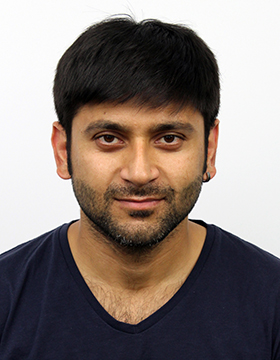 Allen School alumnus Ratul Mahajan (Ph.D., ’05) will return to his alma mater in January as a faculty member after spending 13 years in industry as a researcher and entrepreneur. During that time, Mahajan has focused on the development of new architectures, systems, and tools for making cloud networks more efficient, agile, and reliable — first during more than a decade at Microsoft Research in Redmond, and more recently, as Cofounder and CEO of Seattle-based startup Intentionet. Mahajan — a self-described “computer systems researcher with a networking focus” — draws inspiration and techniques from multiple domains, including machine learning, theory, human-computer interaction, formal verification, and programming languages. He has applied these techniques to a variety of research questions in the areas of Internet measurement, wireless networks, mobile systems, smart home systems, and network verification.
Allen School alumnus Ratul Mahajan (Ph.D., ’05) will return to his alma mater in January as a faculty member after spending 13 years in industry as a researcher and entrepreneur. During that time, Mahajan has focused on the development of new architectures, systems, and tools for making cloud networks more efficient, agile, and reliable — first during more than a decade at Microsoft Research in Redmond, and more recently, as Cofounder and CEO of Seattle-based startup Intentionet. Mahajan — a self-described “computer systems researcher with a networking focus” — draws inspiration and techniques from multiple domains, including machine learning, theory, human-computer interaction, formal verification, and programming languages. He has applied these techniques to a variety of research questions in the areas of Internet measurement, wireless networks, mobile systems, smart home systems, and network verification.
Cloud computing is a particularly compelling area of exploration for Mahajan — not only for the way it has transformed computing infrastructure on a practical level, but its suitability as a vessel for realizing new research ideas in real-world systems. One of those ideas is centralized resource allocation, a concept that turns the typical distributed approach to allocating resources across computer networks on its head. Aiming to move beyond the inefficiency and rigidity of the traditional model, Mahajan and his colleagues developed their software-driven wide area network (SWAN) to enable the centralized allocation of bandwidth in global networks connecting multiple datacenters in the cloud. SWAN was designed to achieve high efficiency, while satisfying policies such as preferential treatment for priority services, by taking a global view of traffic demand and rapidly analyzing and updating the network’s forwarding behavior in response. The researchers devised a novel technique to prevent transient congestion during demand-driven reconfigurations by leveraging a small amount of scratch capacity on the network links. In subsequent work, the team expanded the concept to the delivery of online services via an integrated infrastructure through Footprint, and introduced a network “operating system,” Statesman, that mediates between multiple, independently running applications to achieve a target state which preserves network-wide safety and performance invariants.
Mahajan and his colleagues borrowed from the programming languages and formal verification communities in building a set of sophisticated analysis and synthesis tools for simplifying network configuration tasks and eliminating configuration errors — the primary contributor to the dreaded network outage. They began with Batfish, a tool that enables general analysis of a network’s configuration based on its packet-forwarding behavior. The team followed that up with a pair of tools designed to move network configuration beyond testing to verification: abstract representation of control plane (ARC) for rapidly analyzing correctness under arbitrary failures, and efficient reachability analysis (ERA) for performing efficient network reachability analyses of various incarnations of a network using a symbolic model of the network control plane. To simplify the underlying task of generating correct configurations in the first place, Mahajan and his colleagues built Propane, the first system capable of generating border gateway protocol (BGP) configurations that are provably correct. Propane, which earned the team Best Paper at SIGCOMM 2016, was followed by Propane/AT, a configuration-synthesis system that relies on abstract topologies to support network evolution.
Before enrolling in the Allen School’s Ph.D. program, where he was advised by professors Tom Anderson and David Wetherall, Mahajan received his bachelor’s degree from the Indian Institute of Technology in Delhi. He has earned numerous accolades for his research; in addition to the Best Paper for Propane, Mahajan has been recognized by ACM SIGCOMM with a Best Student Paper, Rising Star, and Test of Time awards; the William R. Bennett prize by the Institute of Electrical and Electronics Engineers (IEEE), Best Paper by the Haifa Verification Conference (HVC), Best Dataset Award by the Internet Measurement Conference (IMC); and the Microsoft Significant Contribution Award for his work on the company’s cloud computing infrastructure.
Sewoong Oh, machine learning
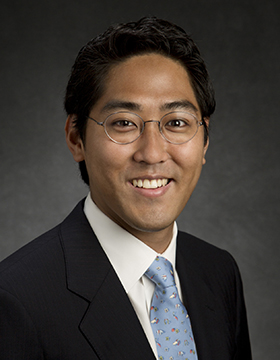
Sewoong Oh will bring his expertise in machine learning to the Allen School in January after six years on the faculty of the Department of Industrial and Enterprise Systems at the University of Illinois at Urbana-Champaign. Oh focuses his research at the intersection of theory and practice, with an emphasis on the development of new algorithmic solutions for machine learning applications using techniques drawn from information theory, coding theory, applied probability, stochastic networks, and optimization.
One of the topics that Oh has been keen to explore is the rise of social-media sharing via anonymous messaging platforms. Spurred by an interest in how people use such platforms to support freedom of expression and ensure personal safety, Oh and his colleagues developed a set of novel techniques for safeguarding users’ anonymity against adversaries attempting to uncover the source of potentially sensitive messages online. The researchers developed a novel messaging protocol, adaptive diffusion, for which they earned the Best Paper Award at the Association of Computing Machinery’s International Conference on Measurement and Modeling of Computer Systems (ACM SIGMETRICS 2015). Adaptive diffusion rapidly spreads anonymous messages on an underlying contact network, such as a network of phone contacts or Facebook friends. Oh and his team demonstrated that a perfect obfuscation of the source is guaranteed when the communication graph is an infinite regular tree. They went a step further with the development of preferential attachment adaptive diffusion (PAAD), a new family of protocols to counteract adversarial attempts to identify a message source through statistical inference in real-world social networks. Oh then turned his attention from preserving individuals’ anonymity in a crowd to leveraging the wisdom of the crowd, receiving an NSF CAREER Award to advance the algorithmic foundations of social computing and explore how the data generated by online communities can be harnessed to address complex societal challenges.
Oh is also interested in advancing the state of the art in training algorithms for generative adversarial networks (GANs). GANs are leading-edge techniques for training generative models to produce realistic examples of images and texts using competing neural networks. They are particularly promising in image and video processing and for dialogue systems and chatbots. One of their shortcomings, however, is that they tend to produce samples with little diversity — even when trained on diverse data sets. Oh and his colleagues set out to better understand and mitigate this phenomenon, known as mode collapse, by examining GANs through the lens of binary hypothesis testing. This novel perspective yields a formal mathematical definition of mode collapse that allows one to represent a pair of distributions — the target and the generator — as a two-dimensional region. The analysis of these mode collapse regions leads to a new framework, PacGAN, which naturally penalizes generator distributions with more mode collapse during the training process. With PacGAN, the discriminator makes decisions based on multiple “packed” samples from the same class — either real or artificially generated — rather than treating each sample as a single input. This idea of packing is shown to be fundamentally related to the concept of mode collapse, with a packed discriminator inherently penalizing mode collapse. The researchers’ approach, which can be applied to any standard GAN, enables the generator to more readily detect a lack of diversity and combat mode collapse without requiring the significant computational overhead or delicate fine-tuning of hyperparameters associated with previous approaches.
Oh received the ACM SIGMETRICS Rising Star Research Award in recognition of his outstanding early-career contributions matrix factorization, statistical learning, and non-convex optimization. Before joining the UIUC faculty, Oh was a postdoctoral researcher in MIT’s Laboratory of Information and Decision Sciences (LIDS). He earned his Ph.D. in electrical engineering from Stanford University and his bachelor’s in electrical engineering from Seoul National University in Korea.
Hunter Schafer, computer science education
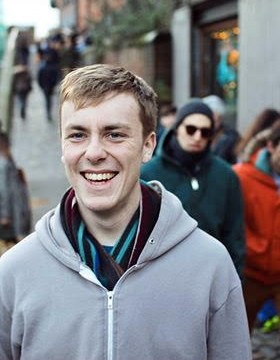 Hunter Schafer joined the Allen School faculty this fall as a full-time lecturer. The appointment was a homecoming for Schafer, who graduated from the Allen School’s combined bachelor’s/master’s program this past spring. During the course of his studies, Schafer served as a part-time lecturer, teaching assistant (TA), and head TA for multiple sections of our introductory computer science courses.
Hunter Schafer joined the Allen School faculty this fall as a full-time lecturer. The appointment was a homecoming for Schafer, who graduated from the Allen School’s combined bachelor’s/master’s program this past spring. During the course of his studies, Schafer served as a part-time lecturer, teaching assistant (TA), and head TA for multiple sections of our introductory computer science courses.
As head TA for CSE 143, the follow-on to our popular introductory programming course, Schafer coordinated roughly 30 to 40 TAs per quarter. In this role, he helped to develop course goals, coordinated TA staff meetings, shared teaching best practices, and trained TAs in the grading of assignments — all in addition to handling his own quiz sections. In addition to playing a vital role in introducing hundreds of fellow students to computer science, Schafer served as a TA for CSE 373, the Allen School’s upper-division course on data abstractions and algorithms for non-CSE majors.
Outside of his teaching duties, Schafer spent time in industry as a software development intern. While at Socrata, he was responsible for creating a tool in Python for classifying the semantic meaning of a column in a dataset that improved the user experience and could be extended to other classification problems. He also worked as part of a team defining the Python libraries needed to support the company’s work on diverse machine learning problems. As an intern at Redfin, Schafer developed a tool to assist realtors in presenting information contained in a potential buyer’s offer in a dynamic and visually appealing way.
Foreshadowing his future career path, last summer Schafer went to the head of the class as the lecturer for CSE 143 that quarter, overseeing a class of more than 100 students and a staff of seven TAs. That fall, while working towards his master’s degree, Schafer led an honors discussion section of CSE 142, introducing his students to topics in machine learning, data visualization, and online privacy to supplement their programming lessons. Throughout his time as an instructor, Schafer has aimed to help students see the relevance of computer science in their day to day lives in addition to introducing them to concepts of interest beyond core programming.
Adriana Schulz, computational design for manufacturing
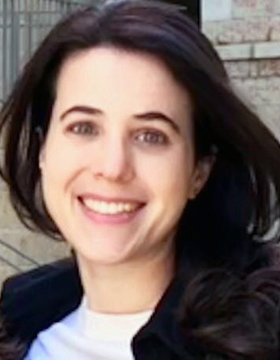 Adriana Schulz, who arrived at the Allen School this fall after earning her Ph.D. at MIT, focuses on computational design to drive the next great wave of manufacturing innovation. Drawing upon her expertise in computer graphics and inspired by recent hardware advances in 3D printing, industrial robotics, and automated whole-garment knitting, Schulz develops novel software tools that empower users to create increasingly complex, integrated objects.
Adriana Schulz, who arrived at the Allen School this fall after earning her Ph.D. at MIT, focuses on computational design to drive the next great wave of manufacturing innovation. Drawing upon her expertise in computer graphics and inspired by recent hardware advances in 3D printing, industrial robotics, and automated whole-garment knitting, Schulz develops novel software tools that empower users to create increasingly complex, integrated objects.
At its core, Schulz’s work aims to democratize design and manufacturing through computation. To that end, she has produced numerous tools and data-driven algorithms to render the process more efficient and accessible to people of different skill levels, including those without domain expertise, while optimizing performance. For example, Schulz and her colleagues devised a way to interpolate parametric data from Computer Aided Design (CAD) models — nearly ubiquitous in professional design and manufacturing — and incorporated it into an interactive tool, InstantCAD, that enables users to quickly and easily gauge how changes to a mechanical shape’s geometry will impact its performance without the time-consuming and computationally expensive operations required by traditional CAD tools. Schulz and her fellow researchers also developed an algorithm and interactive visualization tool for exploring multiple, sometimes conflicting, design and performance trade-offs — enabling designers to efficiently evaluate and navigate such compromises. The team presented both projects at the International Conference & Exhibition on Computer Graphics and Interactive Techniques (ACM SIGGRAPH).
Schulz has applied a similar approach to empower novice users to create their own functioning robots, flying drones, and even custom-built furniture. As a member of MIT’s Computational Fabrication Group, she co-led the development of Interactive Robogami, a framework for creating robots out of flat sheets that can be folded into 3D structures — reminiscent of origami, the Japanese art of paper folding. The system enables users to compose customized robot designs from a database of 3D-printable robot parts and test their functionality via simulation before moving ahead with fabrication. She also contributed to an interactive system for designing and fabricating multicopters. With its intuitive interface, the system enables even novice users to assemble a working aerial drone design while exploring tradeoffs between criteria such as size, payload, and battery usage. More recently, Schulz was part of the team that designed AutoSaw, a template-based system that enables the design and robot-assisted fabrication of custom carpentry items — an approach that could help usher in a new era of mass customization.
Before her arrival at MIT, Schulz earned her master’s degree in mathematics from the National Institute of Pure and Applied Mathematics and her bachelor’s in electronics engineering from the Federal University of Rio de Janeiro in Brazil. She is the co-author of the book Compressive Sensing and her work has been featured in Wired, TechCrunch, MIT Technology Review, New Scientist, IEEE Spectrum, and more.
Stefano Tessaro, cryptography
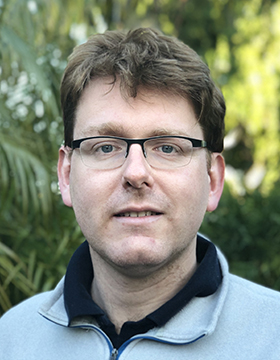 Stefano Tessaro will join the Allen School faculty in January after spending more than five years on the faculty of the University of California, Santa Barbara, where he holds the Glen and Susanne Culler Chair in Computer Science. Tessaro brings expertise in a variety of topics related to the foundations and applications of cryptography and its connections to disciplines such as theoretical computer science, information theory, and computer security. Together, he and fellow newcomer Rachel Lin will build upon the Allen School’s existing strengths in security and theory to expand into this exciting new area of research.
Stefano Tessaro will join the Allen School faculty in January after spending more than five years on the faculty of the University of California, Santa Barbara, where he holds the Glen and Susanne Culler Chair in Computer Science. Tessaro brings expertise in a variety of topics related to the foundations and applications of cryptography and its connections to disciplines such as theoretical computer science, information theory, and computer security. Together, he and fellow newcomer Rachel Lin will build upon the Allen School’s existing strengths in security and theory to expand into this exciting new area of research.
Tessaro is particularly interested in the concept of provable security, in which formal definitions of threat models enable rigorous security proofs. To that end, he often pursues theoretical advances that enable the application of provable security to real-world cryptography. For example, his work uses techniques from complexity theory, information theory, combinatorics and probability theory to study the effective security of methods for encryption and authentication, to yield new and improved mechanisms for password protection, and to explore tradeoffs between input/output efficiency and security for cloud computing applications.
Throughout his research, Tessaro’s goal has been to identify problems and solutions that blend practical value with theoretical depth. This principle is evident in his pioneering work — for which he earned an NSF CAREER Award — that seeks to reconcile the need for provable security guarantees with real-world efficiency demands. In a paper that earned the Best Paper Award at EUROCRYPT 2017, Tessaro and co-authors presented security proofs for practical schemes to protect passwords against attacks using custom-made hardware, overcoming technical barriers in characterizing the power of memory-limited adversaries. He also developed new information-theoretic techniques to analyze algorithms in symmetric cryptography. This work is the closest that theory researchers have come to understanding why basic cryptographic building blocks like the Advanced Encryption Standard (AES) — the most widely used cryptographic algorithm — withstand a broad class of attacks. Tessaro also studies and formalizes emerging threats, such as large-scale attackers (e.g., state actors) leveraging their ability to collect vast amounts of Internet traffic. He proved, for example, that core components of Internet-scale protocols like Transportation Layer Security (TLS) are well designed to resist such attacks. Tessaro’s work does not only deal with proofs; he recently surfaced attacks against standards for Format-Preserving Encryption, a widely adopted tool for data protection in the financial industry.
Last year, Tessaro was recognized with an Alfred P. Sloan Research Fellowship for his contributions to the theoretical foundations of cryptography — contributions that extend to their practical application to large-scale systems in the form of efficiency tradeoffs in searchable symmetric encryption (SSE) and the first oblivious storage system that is secure under concurrent access. Prior to his arrival at UC Santa Barbara, Tessaro held postdoctoral research positions at MIT and the University of California, San Diego. He earned his master’s and Ph.D. in computer science from ETH Zurich in Switzerland.
Brett Wortzman, computer science education
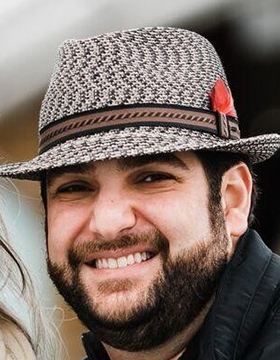 Brett Wortzman is no stranger to the Allen School community, having previously taught multiple sections of our introductory courses on a part-time basis and served as an instructor for our DawgBytes summer camps.
Brett Wortzman is no stranger to the Allen School community, having previously taught multiple sections of our introductory courses on a part-time basis and served as an instructor for our DawgBytes summer camps.
Wortzman began his career more than a decade ago as a software engineer in the technology industry after earning his bachelor’s in computer science from Harvard University. He soon discovered that he preferred the classroom to the conference room, however, and decided to make the leap to education. This fall, he is introducing a new class of UW students to the wonders of computer science as a full-time faculty member.
After earning his master’s in education from UW, Wortzman embarked on his new career by teaching computer science and mathematics at Issaquah High School. There, he was responsible for growing the school’s lone Advanced Placement computer science class — which originally reached a grand total of 16 students — into a robust program encompassing four unique computer science courses divided into eight sections and serving more than 200 students annually. His successful efforts earned him an Inspirational Teachers award from the Allen School last year.
In addition to his formal teaching duties, Wortzman has served in a variety of roles for TEALS, an organization that aims to increase youth access to computer science by partnering with K-12 teachers and schools to build sustainable CS education programs. He is also active in the Puget Sound Computer Science Teachers Association and is an avid organizer of educator meet-ups to build community and share best practices.
The latest round of new arrivals follows the addition of Hannaneh Hajishirzi, whose expertise spans artificial intelligence, natural language processing, and machine learning, this past summer. This talented cohort builds upon the Allen School’s recent success in bringing recognized leaders and rising stars to UW and the Seattle region, including roboticist Sidd Srinivasa and computer engineer Michael Taylor, human computer interaction experts Jennifer Mankoff and Jon Froehlich, machine learning researcher Kevin Jamieson, and theoretical computer scientist Yin Tat Lee.
Welcome, one and all, to the Allen School family! Read more →
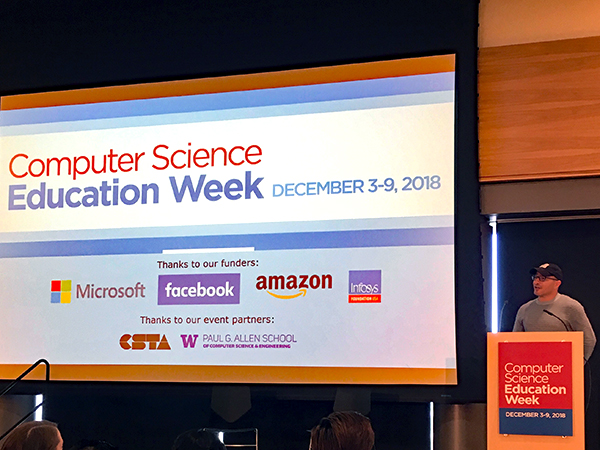
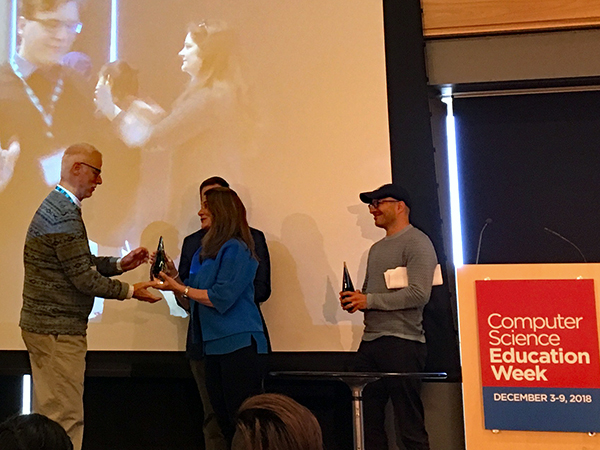
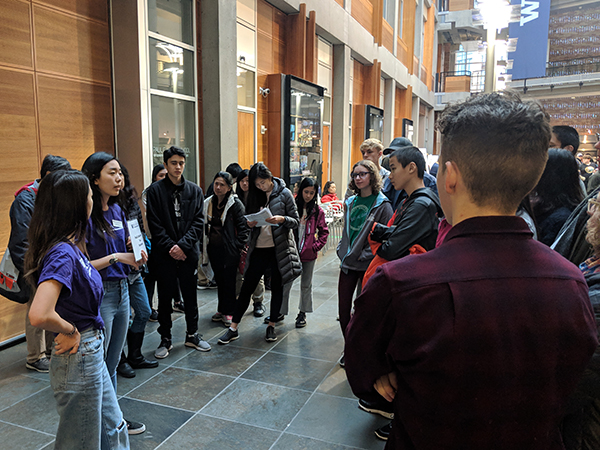


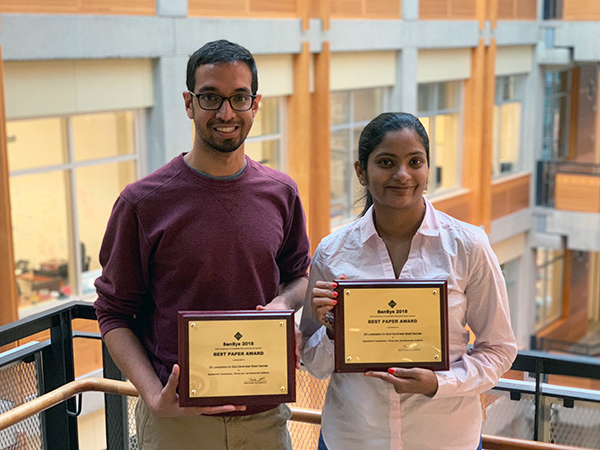










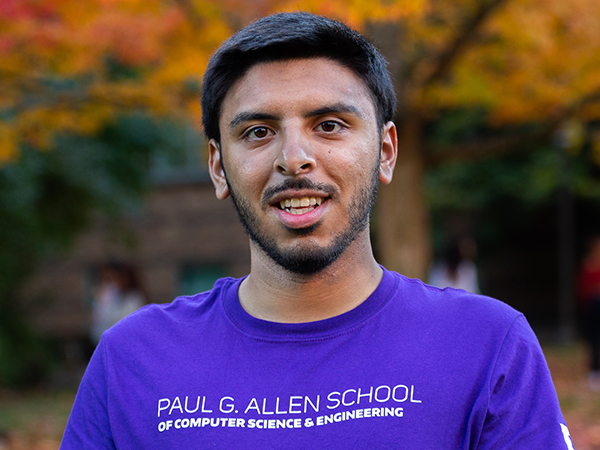
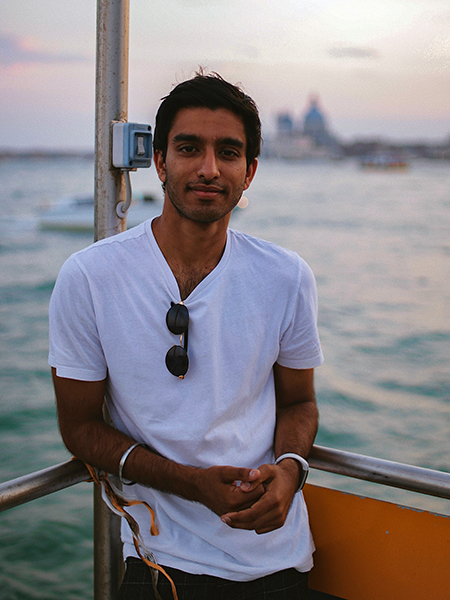


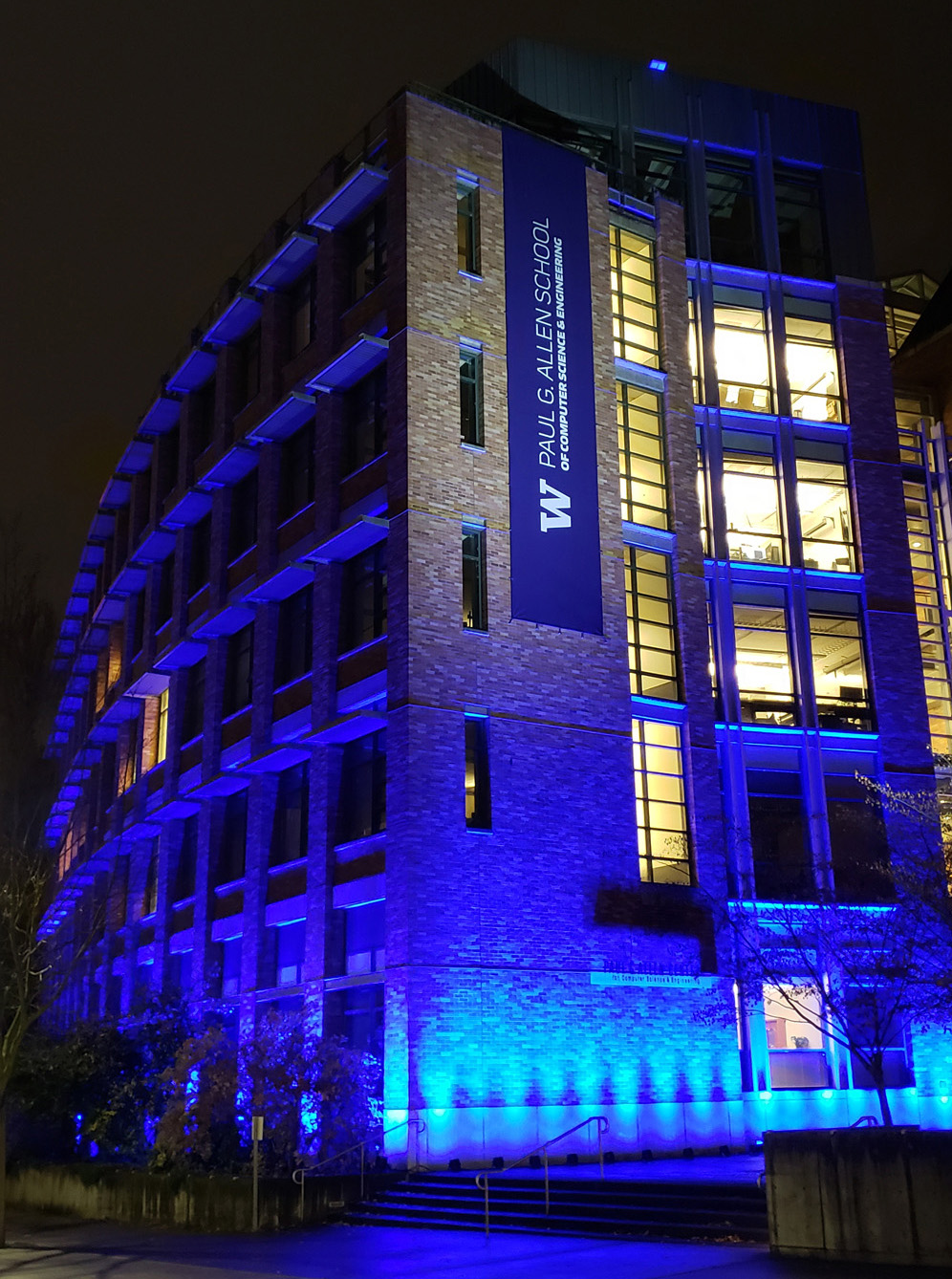

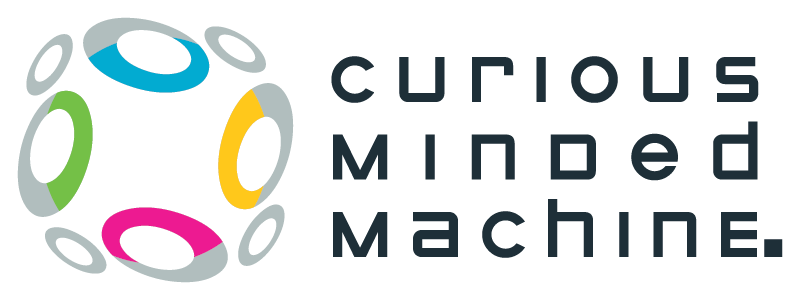
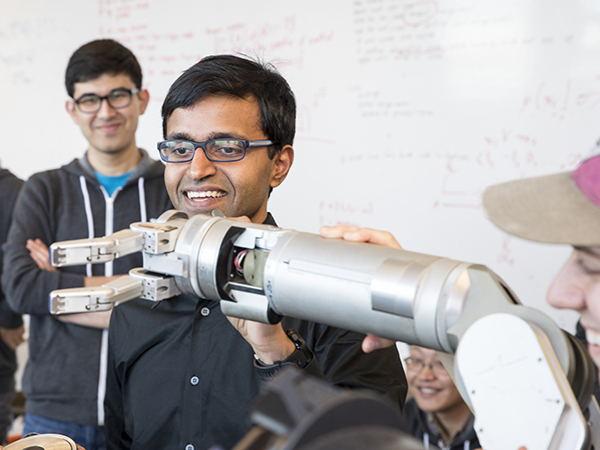
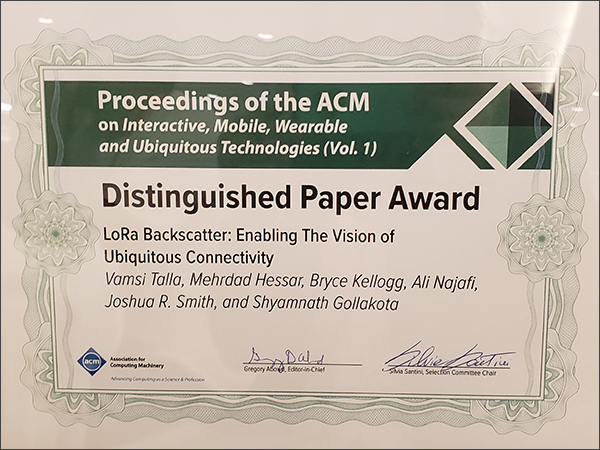
 It is with great sadness that the faculty, staff, and students of the Paul G. Allen School of Computer Science & Engineering mark the passing of Paul Allen — pioneering innovator, generous philanthropist, and faithful friend. Mr. Allen was a visionary who opened up new frontiers and pushed the limits of scientific discovery. His
It is with great sadness that the faculty, staff, and students of the Paul G. Allen School of Computer Science & Engineering mark the passing of Paul Allen — pioneering innovator, generous philanthropist, and faithful friend. Mr. Allen was a visionary who opened up new frontiers and pushed the limits of scientific discovery. His 